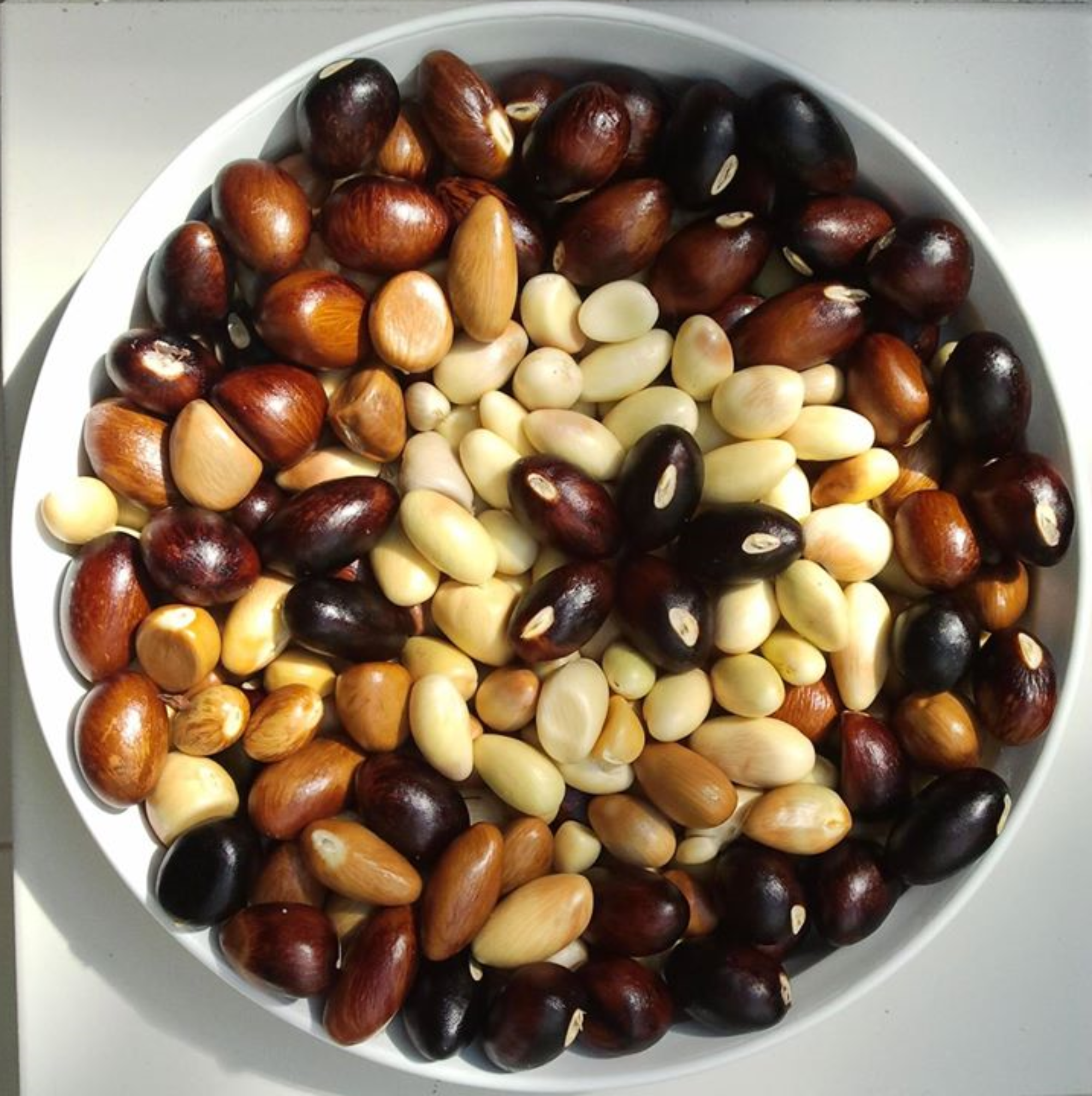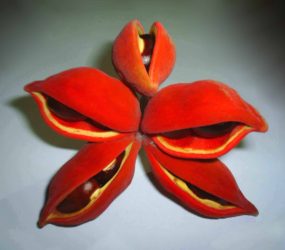เกาลัด kaolud เกาลัดไทย
เกาลัดเป็นพันธุ์ไม้ยืนต้นขนาดใหญ่ โดยทั่วไปจะพบ เกาลัด หรือลูก เกาลัด ชนิดมีขนคล้ายเงาะที่เปลือกหุ้มเมล็ด เกาลัดอีกพันธุ์ที่มีความแปลกตาออกไป เป็นพันธุ์ไม้มงคลจะมีเปลือกหุ้มเมล็ดคล้ายกำมะหยี่สีแดง เมล็ดเกาลัดที่อยู่ในเปลือกหุ้มเมื่อสุกจะมีสีน้ำตาลเข้ม จึงเรียกง่ายๆว่าเป็นเกาลัดเปลือกกำมะหยี่ เกาลัดเปลือกกำมะหยี่สีแดง หรือเกาลัดแดง กำมะหยี่แดง ซึ่งเป็นต้นไม้มงคล พันธุ์ไม้หายากชนิดหนึ่ง
เกาลัด
เกาลัดแดง เป็นไม้ที่สามารถดูดซับก๊าซคาร์บอนไดออกไซด์ได้ดี เพื่อนำไปใช้ในกระบวนการสร้างลำต้น อีกทั้งเกาลัดมีใบขนาดกลางถึงขนาดใหญ่ที่ไม่ค่อยร่วง เกาลัดจึงสามารถให้ร่มเงา กรองฝุ่นละออง ลดมลภาวะ รวมทั้งลดสภาวะโลกร้อนได้เป็นอย่างดี เกาลัดเกาลัดแดงจึงเป็นตัวเลือกที่ดี ถ้าต้องการปลูกต้นไม้ยืนต้นที่ให้ประโยชน์ดังกล่าวข้างต้น โดยเฉพาะเกาลัดแดงซึ่งให้ดอกผลเกาลัดที่มีสีสันสวยงาม รวมทั้งรูปแบบของดอกผลของเกาลัดแดงค่อนข้างสะดุดตา สวยงามกว่าเกาลัดพันธุ์อื่นๆ
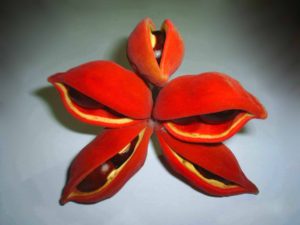
เกาลัด การปลูกเกาลัด kaolud
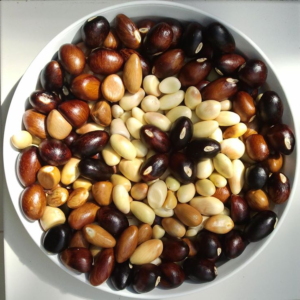
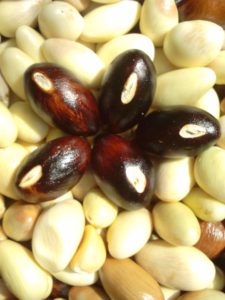
การปลูกเกาลัด
เกาลัดกำมะหยี่ การปลูกเกาลัดทำได้จากเมล็ด และการตอนกิ่ง ดอกเป็นช่อสีชมพูอ่อน มีดอกขนาดเล็ก เมื่อติดผลจะได้เป็นช่อเกาลัดเปลือกสีเขียวก่อน เมื่อเริ่มสุกสีของเปลือกหุ้มเมล็ดจะเริ่มเปลี่ยนเป็นสีแดง และปริออกแสดงให้เห็นถึงเมล็ดเกาลัดที่อยู่ด้านใน ซึ่งอาจมีเมล็ดอยู่ 1-4 เมล็ด ลูกเกาลัดจะมีสีน้ำตาลอ่อนถึงสีน้ำตาลเข้ม เมื่อ เกาลัดแดง ออกดอกและผลเต็มต้น จนกระทั่งมีเปลือกกำมะหยี่สีแดง ดูสวยมาก เกาลัด เกาลัดแดง
โดยทั่วไปการปลูกเกาลัด ต้องอาศัยความอดทนและการรอคอย สมัยก่อนเคยมีความเชื่อกันว่าปลูกเกาลัดในประเทศไทยไม่ได้ แต่ที่จริงแล้วการปลูกเกาลัดแดงสามารถทำได้ และผลิดอกออกผลได้เป็นอย่างดีด้วย ไม่ว่าจะเป็นการปลูกจากเมล็ดเกาลัด(ลูกเกาลัด) หรือตอนกิ่งก็ตาม (สามารถดูรายละเอียดการปลูกเกาลัดได้ในหัวข้อพันธุ์ไม้)

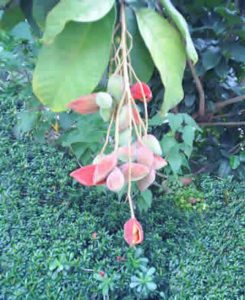
ส่วนใหญ่การปลูกเกาลัด นิยมปลูกในเขตหนาว แต่ในประเทศไทยก็ปลูกได้ตั้งแต่ภาคเหนือจนถึงภาคกลาง และจัดว่าเป็นไม้มงคลที่เป็นต้นไม้หายากและน่าปลูกชนิดหนึ่ง
นอกจากนี้เกาลัดยังมีส่วนช่วยในการลดสภาวะโลกร้อน ต้นเกาลัดมีใบขนาดกลาง ใบเกาลัดจึงสามารถให้ร่มเงาได้เป็นอย่างดี เกาลัดจึงเป็นพันธุ์ไม้อีกชนิดหนึ่งที่ควรปลูกไว้ตามบ้าน อย่างไรก็ตามเมื่อต้นเกาลัดมีขนาดโตขึ้น อาจต้องหาพื้นที่ในการลงพื้นดิน เนื่องจากต้นเกาลัดเป็นไม้ยืนต้นที่มีลักษณะสูงใหญ่ แผ่กิ่งก้านสาขาได้ค่อนข้างกว้าง
เมล็ดเกาลัดหาดูได้ตามเยาวราช ที่นำมาคั่วด้วยทราย

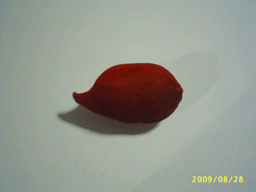
พันธุ์ไม้ยืนต้นขนาดใหญ่ โดยทั่วไปจะพบเกาลัด หรือลูกเกาลัดชนิดมีขนคล้ายเงาะที่เปลือกหุ้มเมล็ดเกาลัด เกาลัดอีกพันธุ์ที่มีความแปลกตาออกไป เป็นพันธุ์ไม้มงคลจะมีเปลือกหุ้มเมล็ดคล้ายกำมะหยี่สีแดง เมล็ดเกาลัดแดง ที่อยู่ในเปลือกหุ้มเมื่อสุกจะมีสีน้ำตาลเข้ม จึงเรียกง่ายๆว่าเป็น เกาลัดเปลือกกำมะหยี่ เกาลัดเปลือกกำมะหยี่สีแดง หรือลูกเกาลัดกำมะหยี่แดง ซึ่งเป็นต้นไม้มงคล พันธุ์ไม้หายากชนิดหนึ่ง
เกาลัดเป็นไม้ที่สามารถดูดซับก๊าซคาร์บอนไดออกไซด์ได้ดี เพื่อนำไปใช้ในกระบวนการสร้างลำต้น อีกทั้งเกาลัดแดงมีใบขนาดกลางถึงขนาดใหญ่ที่ไม่ค่อยร่วง จึงสามารถให้ร่มเงา กรองฝุ่นละออง ลดมลภาวะ รวมทั้งลดสภาวะโลกร้อนได้เป็นอย่างดี นอกจากนี้เกาลัดยังมีส่วนช่วยในการลดสภาวะโลกร้อน ต้นเกาลัดมีใบขนาดกลาง ใบเกาลัดจึงสามารถให้ร่มเงาได้เป็นอย่างดี เกาลัดจึงเป็นพันธุ์ไม้อีกชนิดหนึ่งที่ควรปลูกไว้ตามบ้าน อย่างไรก็ตามเมื่อต้นเกาลัดมีขนาดโตขึ้น อาจต้องหาพื้นที่ในการลงพื้นดิน เนื่องจากต้นเกาลัดเป็นไม้ยืนต้นที่มีลักษณะสูงใหญ่ แผ่กิ่งก้านสาขาได้ค่อนข้างกว้าง
วิธีการปลูกเกาลัด
การปลูกเกาลัดทำได้จากเมล็ดเกาลัด และการตอนกิ่ง ดอกเป็นช่อสีชมพูอ่อน มีดอกขนาดเล็ก เมื่อติดผลจะได้เป็นช่อเกาลัดเปลือกสีเขียวก่อน เมื่อเริ่มสุกสีของเปลือกหุ้มเมล็ดเกาลัดจะเริ่มเปลี่ยนเป็นสีแดง และปริออกแสดงให้เห็นถึงเมล็ดเกาลัดที่อยู่ด้านใน ซึ่งอาจมีเมล็ดเกาลัดอยู่ 1-4 เมล็ด ลูกเกาลัดจะมีสีน้ำตาลอ่อนถึงสีน้ำตาลเข้ม เมื่อ เกาลัด ออกดอกและผลเต็มต้น จนกระทั่งมีเปลือกกำมะหยี่สีแดง ดูสวยมาก
การปลูกเกาลัด ต้องอาศัยความอดทนและการรอคอย สมัยก่อนเคยมีความเชื่อกันว่าปลูกเกาลัดในประเทศไทยไม่ได้ แต่ที่จริงแล้วการปลูกเกาลัดสามารถทำได้ และผลิดอกออกผลได้เป็นอย่างดีด้วย ไม่ว่าจะเป็นการปลูกเกาลัดจากเมล็ดเกาลัด(ลูกเกาลัด) หรือตอนกิ่งก็ตาม (สามารถดูรายละเอียดการปลูกเกาลัดได้ในหัวข้อพันธุ์ไม้)
โดยทั่วไป การปลูกเกาลัด นิยมปลูกในเขตหนาว แต่ในประเทศไทยก็ปลูกได้ตั้งแต่ภาคเหนือจนถึงภาคกลาง และจัดว่าเป็นไม้มงคลที่เป็นต้นไม้หายากและน่าปลูกชนิดหนึ่ง
เมล็ดเกาลัดหาดูได้ตามเยาวราช ที่นำมาคั่วด้วยทราย
เกาลัด
พันธุ์ไม้ยืนต้นขนาดใหญ่ โดยทั่วไปจะพบเกาลัด หรือลูกเกาลัดชนิดมีขนคล้ายเงาะที่เปลือกหุ้มเมล็ดเกาลัด เกาลัดอีกพันธุ์ที่มีความแปลกตาออกไป เป็นพันธุ์ไม้มงคลจะมีเปลือกหุ้มเมล็ดคล้ายกำมะหยี่สีแดง เมล็ดเกาลัดที่อยู่ในเปลือกหุ้มเมื่อสุกจะมีสีน้ำตาลเข้ม จึงเรียกง่ายๆว่าเป็น เกาลัดเปลือกกำมะหยี่ เกาลัดเปลือกกำมะหยี่สีแดง หรือลูกเกาลัดกำมะหยี่แดง ซึ่งเป็นต้นไม้มงคล พันธุ์ไม้หายากชนิดหนึ่ง
เกาลัดเป็นไม้ที่สามารถดูดซับก๊าซคาร์บอนไดออกไซด์ได้ดี เพื่อนำไปใช้ในกระบวนการสร้างลำต้น อีกทั้งเกาลัดมีใบขนาดกลางถึงขนาดใหญ่ที่ไม่ค่อยร่วง จึงสามารถให้ร่มเงา กรองฝุ่นละออง ลดมลภาวะ รวมทั้งลดสภาวะโลกร้อนได้เป็นอย่างดี
นอกจากนี้เกาลัดยังมีส่วนช่วยในการลดสภาวะโลกร้อน ต้นเกาลัดมีใบขนาดกลาง ใบเกาลัดจึงสามารถให้ร่มเงาได้เป็นอย่างดี เกาลัดจึงเป็นพันธุ์ไม้อีกชนิดหนึ่งที่ควรปลูกไว้ตามบ้าน อย่างไรก็ตามเมื่อต้นเกาลัดมีขนาดโตขึ้น อาจต้องหาพื้นที่ในการลงพื้นดิน เนื่องจากต้นเกาลัดเป็นไม้ยืนต้นที่มีลักษณะสูงใหญ่ แผ่กิ่งก้านสาขาได้ค่อนข้างกว้าง
การปลูกต้นไม้
การปลูกต้นไม้ที่มีพันธุ์ที่เหมาะสม ไม่มีพิษหรือเป็นอันตรายใดๆต่อผู้คนรอบข้าง จะมีส่วนช่วยให้โลกใบนี้น่าอยู่มากขึ้น เนื่องจากประชากรโลกเพิ่มมากขึ้นทุกวัน หนาแน่นขึ้น การใช้ทรัพยากรธรรมชาติก็มีมากขึ้นเป็นเงาตามตัว การใช้น้ำมัน ป่าไม้ แม่น้ำ หิน ดิน ทราย ต้องผ่านกระบวนการผลิตหลายขั้นตอน เราไม่สามารถหลีกเลี่ยงการผลิตดังกล่าวได้เนื่องจากเราต้องการใช้เพื่อช่วยอำนวยความสะดวกในการใช้ชีวิตประจำวันของพวกเราทุกคน ผลกระทบที่ตามมาก็คือมลภาวะที่เพิ่มขึ้นอย่างทวีคูณ ทั้งฝุ่นละออง ควันพิษ สภาวะเรือนกระจกที่ทำให้โลกร้อนขึ้น น้ำท่วม สภาพดินฟ้าอากาศแปรปรวนไปจากเดิมที่ควรเป็นไปอย่างมาก สังเกตได้จากฤดูกาลต่างๆผิดเพี้ยนไปจากเดิม ฤดูหนาวก็ไม่หนาว ฤดูร้อนก็ร้อนมากขึ้น ฤดูฝนอาจมีปริมาณน้ำฝนเปลี่ยนแปลงไปจากค่าเฉลี่ย รวมทั้งเกิดพายุในแต่ละฤดู ความแรงของพายุต่างๆทั่วโลกมีความรุนแรงมากขึ้น
ถ้าพวกเราไม่ตระหนักถึงสิ่งที่เกิดขึ้นในเรื่องเหล่านี้บ้าง อนาคตข้างหน้าโลกของเราอาจมีสภาพที่ไม่เหมาะสมกับการดำรงชีวิตสำหรับมนุษย์ก็เป็นได้ จึงควรหันมาใส่ใจ ช่วยกันคนละไม้คนละมือในการร่วมกันปลูกต้นไม้เพื่อโลกที่เราได้อยู่อาศัยกันมาจนถึงปัจจุบัน รวมถึงเพื่อคนรุ่นถัดๆไปจะได้ไม่ต้องรับภาระในกรณีที่คนรุ่นเราไม่ตระหนักและเริ่มช่วยกันตั้งแต่วันนี้ ลองนึกภาพคนรุ่นถัดไปที่เป็นลูกหลาน ดังนั้นถ้าพวกเราร่วมมือกันปลูกต้นไม้เพื่อโลก ก็จะทำให้โลกใบนี้อยู่แบบมีสภาวะที่เหมาะสมไม่เป็นพิษภัยต่อคนรุ่นต่อๆไป ปลูกต้นไม้ยืนด้นคนละต้น เริ่มช่วยกันปลูกตั้งแต่วันนี้เพื่อวันข้างหน้า โลกจะได้สวยน่าอยู่ตลอดไป
Chestnuts in Thailand hold a special place in the country’s culinary and cultural landscape. While not native to Thailand, chestnuts have become an integral part of the country’s diverse and flavorful cuisine, adding a unique touch to both traditional and modern dishes.
The chestnut tree, scientifically known as Castanea, is primarily found in the temperate regions of the Northern Hemisphere. However, in Thailand, chestnuts are mostly imported to meet the growing demand. These nuts are commonly associated with the cooler months, particularly during the holiday season, where they find their way into festive recipes and snacks.
In Thai cuisine, chestnuts are prized for their rich, earthy flavor and firm texture. They are used in a variety of dishes, ranging from savory to sweet. One popular way to enjoy chestnuts is in stir-fried dishes, where they add a delightful crunch and nutty taste. Chestnuts are often paired with vegetables, meats, and aromatic spices to create well-balanced and flavorful meals.
During festive occasions and celebrations, chestnuts are frequently incorporated into traditional desserts. Thai chefs skillfully blend chestnuts into sweet treats such as sticky rice cakes, known as “khao niew sangkaya,” where the nutty flavor complements the sweetness of coconut milk and the chewiness of sticky rice.
Street vendors and markets across Thailand also offer roasted chestnuts as a popular snack. The aroma of roasting chestnuts wafts through the air, enticing locals and visitors alike to indulge in this warm and comforting treat. Roasted chestnuts are often enjoyed on their own or combined with other nuts for a mixed, flavorful assortment.
Beyond their culinary significance, chestnuts also play a role in Thai culture. The nuts are sometimes used as offerings in religious ceremonies and festivals, symbolizing abundance and prosperity. Additionally, chestnut trees, with their broad canopies and vibrant foliage, are appreciated for their aesthetic value, contributing to the beauty of parks and gardens in various regions of Thailand.
In conclusion, while chestnuts may not be native to Thailand, they have found a welcoming home in the country’s cuisine and culture. Their versatile use in both savory and sweet dishes, coupled with their association with festivities and religious traditions, has solidified chestnuts as a beloved and integral ingredient in the Thai culinary experience.
Despite being a non-indigenous crop, chestnuts have managed to carve out a distinctive place in Thailand’s agricultural and culinary landscapes. Imported from various regions, these chestnuts have become a favorite ingredient in both traditional Thai dishes and modern gastronomy.
In Thailand, chestnuts are grown in the northern parts of the country, where the climate is more suitable for their cultivation. The cultivation is not as extensive as in their native regions, but the unique flavor and texture of chestnuts have made them a sought-after addition to Thai cuisine.
Chestnuts are often used in savory dishes, contributing a distinct nutty flavor and crunch. Stir-fried dishes featuring chestnuts are popular, with the nuts complementing the flavors of vegetables, meats, and spices. The versatility of chestnuts allows them to seamlessly blend into Thai recipes, enhancing the overall taste and texture of the dish.
During the festive season, chestnuts find their way into celebratory meals and desserts. Thai chefs skillfully incorporate chestnuts into traditional sweets, such as the popular “tub tim grob,” a crispy water chestnut rubies dessert served with coconut milk. The addition of chestnuts provides a delightful contrast in texture and a rich, earthy undertone to the sweetness of the dessert.
Street food vendors often roast chestnuts, filling the air with a tempting aroma that beckons passersby. Roasted chestnuts are a popular street snack, enjoyed for their warmth and comforting flavor. Locals and tourists alike indulge in these roasted treats, especially during the cooler months when the warmth of the chestnuts provides a welcomed respite.
Beyond their culinary uses, chestnut trees have also found a home in Thailand’s landscape. Some areas boast chestnut orchards, contributing not only to the country’s food production but also to the visual appeal of the region. The trees, with their lush greenery and distinctive leaves, add to the natural beauty of Thailand’s agricultural areas.
In essence, while chestnuts may not be native to Thailand, they have seamlessly integrated into the country’s culinary scene. From savory stir-fries to delightful desserts and street snacks, chestnuts have become a cherished ingredient, adding a touch of warmth and flavor to Thailand’s diverse and vibrant food culture.
The tale of chestnuts in Thailand weaves a story of culinary fusion and gastronomic delight. Although chestnuts are not native to the country, they have found an enthusiastic reception, gracing Thai tables with their unique flavor and versatility.
Chestnuts, known as “look gao” in Thai, are primarily imported to meet the demand for these delectable nuts. Their firm texture and earthy taste make them a favorite ingredient in a variety of dishes. Thai chefs have ingeniously incorporated chestnuts into both traditional and contemporary recipes, offering a delightful twist to the local cuisine.
One of the popular ways chestnuts are enjoyed is through stir-fried dishes, where they contribute a satisfying crunch and a rich, nutty undertone. Paired with an array of vegetables, meats, and aromatic spices, chestnuts add complexity and depth to Thai stir-fries, creating a harmonious blend of flavors and textures.
During festive seasons and special occasions, chestnuts take center stage in sweet delicacies. Thai desserts like “kanom babin,” a coconut and chestnut sweet cake, showcase the nut’s ability to seamlessly meld with other ingredients, creating a treat that is both comforting and indulgent.
Street vendors across Thailand also play a part in the chestnut saga, roasting these nuts to perfection. The enticing aroma of roasting chestnuts wafts through bustling markets, drawing in locals and tourists alike. Roasted chestnuts, enjoyed warm and straight from the open flames, provide a satisfying street snack experience, especially during the cooler months.
Beyond their culinary contributions, chestnuts have found cultural significance in Thailand. In some regions, chestnut trees are cultivated not only for their nuts but also for their ornamental value. The trees, with their distinct leaves and sprawling branches, contribute to the scenic beauty of certain landscapes.
In essence, while chestnuts may have originated far from the tropical shores of Thailand, they have become an integral part of the nation’s culinary repertoire. From savory stir-fries to sweet desserts and street-side delights, chestnuts have woven themselves into the fabric of Thai gastronomy, adding a touch of warmth and richness to the diverse culinary tapestry of the country.
The presence of chestnuts in Thailand adds a fascinating layer to the country’s culinary diversity, reflecting the adaptability of its gastronomic landscape. Although not native to the tropical climate of Thailand, chestnuts have found a welcoming embrace, making their mark in both traditional and contemporary Thai cuisine.
Thailand’s chestnut story begins with imports, as the country’s climate is not conducive to the natural growth of chestnut trees. Despite this, the nut has become a sought-after ingredient, valued for its distinct taste and versatility in the kitchen. Thai chefs have creatively integrated chestnuts into a range of dishes, showcasing their ability to harmonize with the local flavors.
Stir-fried dishes featuring chestnuts have become a culinary favorite, offering a delightful combination of textures and flavors. The nut’s crunchy texture and earthy notes add depth to savory dishes, enhancing the overall culinary experience. The adaptability of chestnuts allows them to seamlessly blend with Thai ingredients, creating dishes that resonate with both tradition and innovation.
During festive seasons and celebratory moments, chestnuts make their way into the realm of Thai desserts. From chestnut-infused sticky rice to innovative pastries, the nut’s versatility shines in the sweet domain. The subtle sweetness and nuttiness of chestnuts add a unique dimension to traditional Thai sweets, contributing to the richness of the country’s dessert offerings.
Street food culture in Thailand also welcomes chestnuts, with vendors expertly roasting them to perfection. The aroma of roasting chestnuts is a sensory delight that beckons locals and tourists alike. Roasted chestnuts, enjoyed as a warm and comforting street snack, add a touch of coziness to the vibrant street food scene, particularly during the cooler months.
Culturally, chestnuts have become more than just a culinary ingredient; they symbolize the fusion of global flavors in Thailand. While not native, chestnuts have integrated seamlessly into Thai cuisine, reflecting the country’s openness to diverse culinary influences.
In conclusion, the tale of chestnuts in Thailand is one of culinary adaptation and integration. From stir-fries to desserts and street snacks, chestnuts have found a place in the hearts and palates of the Thai people, contributing to the country’s rich and diverse food culture.
The introduction of chestnuts into Thailand’s culinary scene adds a unique twist to the country’s gastronomic story, creating a flavorful fusion of global ingredients. While chestnuts are not indigenous to the tropical landscape of Thailand, they have become a culinary treasure, making their mark in diverse dishes across the nation.
Imported to meet the demand for this prized nut, chestnuts have seamlessly integrated into Thai cuisine, enhancing both traditional and contemporary recipes. One of the most cherished culinary applications is in stir-fried dishes, where chestnuts contribute a satisfying crunch and a subtle nutty undertone. Paired with an array of vegetables, meats, and aromatic spices, chestnuts create a symphony of flavors that captivates the taste buds.
During festive seasons and special occasions, chestnuts take on a sweet role in Thai desserts. The nut’s versatility shines through in desserts like “tub tim krob,” where water chestnuts meet the rich flavor of chestnuts, creating a delightful medley of textures and tastes. This sweet indulgence has become a favorite during celebrations, offering a unique twist to traditional Thai sweets.
Street vendors play a crucial role in the chestnut narrative, roasting the nuts to perfection and infusing the air with an irresistible aroma. Roasted chestnuts, served warm and straight from the open flames, have become a popular street snack, providing a comforting and flavorful experience, particularly during the cooler months.
Chestnuts, though not native, have also found cultural significance in certain regions of Thailand. Beyond their culinary uses, chestnut trees are cultivated for their aesthetic appeal, contributing to the beauty of parks and landscapes. The sprawling branches and distinct leaves of chestnut trees add a touch of greenery to certain areas, blending the exotic with the familiar.
In essence, the story of chestnuts in Thailand mirrors the country’s openness to culinary diversity. From savory stir-fries to sweet desserts and street-side delights, chestnuts have become a beloved ingredient, enriching Thai cuisine with their distinctive flavor and creating a delightful culinary journey for locals and visitors alike.
The infusion of chestnuts into Thailand’s culinary tapestry unfolds as a flavorful chapter that transcends geographical boundaries. Although not native to the warm climate of Thailand, chestnuts have established themselves as a cherished ingredient, contributing a nuanced taste and texture to the nation’s diverse culinary repertoire.
Imported to meet the demand for this distinctive nut, chestnuts have seamlessly adapted to Thai cooking styles, making appearances in both traditional and contemporary dishes. Stir-fried creations, a cornerstone of Thai cuisine, have embraced chestnuts for their crunchiness and earthy undertones, adding depth to the vibrant flavors that characterize Thai gastronomy.
The festive spirit in Thailand is further enhanced by the inclusion of chestnuts in sweet treats. Thai desserts featuring chestnuts, such as the popular “kanom babin,” showcase the nut’s versatility in the realm of sweetness. The interplay of chestnuts with coconut milk and other traditional ingredients produces delightful confections that captivate the palates of those savoring these delectable creations during special occasions.
Street vendors contribute to the allure of chestnuts by skillfully roasting them, creating an olfactory symphony that entices passersby. The aroma of roasted chestnuts permeates bustling markets, inviting locals and tourists to indulge in this warm and comforting street snack. Roasted chestnuts, enjoyed during leisurely strolls, provide not just sustenance but also a sensory experience that adds a touch of coziness to the vibrant street food culture.
Beyond the culinary realm, chestnuts have found a place in the cultural and environmental landscape of certain regions in Thailand. The cultivation of chestnut trees, appreciated for their aesthetic appeal, contributes to the visual charm of parks and green spaces. The trees, with their broad canopies and distinctive leaves, become a part of the scenery, blending the exotic allure of chestnuts with the natural beauty of Thailand.
In conclusion, the presence of chestnuts in Thailand reflects the country’s culinary adaptability and openness to global flavors. From savory stir-fries to sweet desserts and street-side indulgences, chestnuts have become more than an imported ingredient; they have become a flavorful emblem of Thailand’s rich and ever-evolving food culture.
The incorporation of chestnuts into Thailand’s culinary landscape is a tale of gastronomic exploration, blending international flavors into the rich tapestry of Thai cuisine. Despite their non-native origin, chestnuts have become a culinary gem, influencing various aspects of the country’s diverse food culture.
Imported to satisfy the growing demand for this unique nut, chestnuts have seamlessly integrated into Thai cooking practices, finding a place in both traditional and contemporary dishes. Stir-fried delights, a hallmark of Thai cuisine, have embraced chestnuts for their distinct texture and nutty essence, contributing to the complex flavor profiles of these savory creations.
During festive seasons and celebratory moments, chestnuts take center stage in Thai desserts, showcasing their versatility in the realm of sweetness. Desserts like “tub tim grob” feature chestnuts alongside other traditional ingredients, creating a harmonious blend of flavors and textures that tantalize the taste buds during special occasions.
Street vendors, with their culinary expertise, play a crucial role in the chestnut narrative by expertly roasting these nuts to perfection. The irresistible scent of roasted chestnuts permeates the air in bustling markets, drawing in locals and tourists alike. Roasted chestnuts, enjoyed as a warm and comforting street snack, provide a sensory experience that adds a touch of warmth to the vibrant street food culture, especially during cooler months.
Beyond their culinary contributions, chestnuts have made their mark in the cultural and environmental aspects of certain regions in Thailand. Chestnut trees, appreciated for their aesthetic appeal, contribute to the visual charm of parks and green spaces. The presence of these trees, with their distinctive leaves and sprawling branches, adds a touch of natural beauty to the surroundings.
In essence, the story of chestnuts in Thailand is one of culinary curiosity and adaptation. From savory stir-fries to sweet desserts and street-side delights, chestnuts have transcended their geographical origins to become an integral part of the Thai culinary narrative, embodying the nation’s openness to diverse tastes and flavors.
The narrative of chestnuts in Thailand unfolds as a flavorful chapter in the country’s culinary evolution, weaving together global influences and local creativity. While chestnuts are not native to the tropical climate of Thailand, they have become a welcomed addition to the diverse array of ingredients that define Thai cuisine.
Imported to meet the demand for this distinctive nut, chestnuts have seamlessly integrated into the vibrant tapestry of Thai culinary traditions. A notable feature of this integration is their role in stir-fried dishes, where chestnuts contribute a delightful crunch and a nutty nuance. Thai chefs have embraced the versatility of chestnuts, incorporating them into the medley of flavors that characterize the country’s renowned stir-fry recipes.
During festive seasons and special occasions, chestnuts take center stage in Thai desserts, offering a unique twist to traditional sweet treats. Desserts like “khanom babin” showcase the nut’s adaptability in the realm of sweetness, creating a symphony of flavors that appeals to those with a penchant for indulgent and unique confections.
Street vendors play a pivotal role in the chestnut saga, skillfully roasting them to perfection. The aromatic allure of roasted chestnuts wafts through markets, creating an irresistible invitation for passersby. Roasted chestnuts, enjoyed as a warm and comforting street snack, have become synonymous with the sensory pleasures of exploring Thailand’s bustling street food scene.
Culturally, chestnuts have found resonance beyond the kitchen. In certain regions, the cultivation of chestnut trees not only serves as a source of nuts but also contributes to the visual charm of parks and landscapes. The trees, with their sprawling branches and lush foliage, become integral elements in the scenic beauty of these areas.
In summary, the story of chestnuts in Thailand is a testament to the dynamic nature of the country’s culinary landscape. From stir-fries to desserts and street food delights, chestnuts have not only found a place on Thai plates but have also become a symbol of the country’s openness to diverse flavors and ingredients.
The arrival of chestnuts in Thailand’s culinary scene paints a picture of culinary diversity, where global ingredients find a harmonious place in the local gastronomic tapestry. While chestnuts are not native to Thailand’s tropical climate, they have become a flavorful addition, weaving their way into both traditional and modern dishes.
Imported to satisfy the growing demand for this distinctive nut, chestnuts have seamlessly integrated into Thai cuisine, offering their unique texture and flavor to a variety of dishes. Stir-fried creations, a hallmark of Thai cooking, have welcomed chestnuts, providing a satisfying crunch and a rich, earthy undertone to these savory delights.
During festive seasons, chestnuts take on a sweet role, adding a layer of indulgence to traditional Thai desserts. Sweets like “khanom babin” showcase the adaptability of chestnuts in the realm of confectionery, combining their nutty notes with the sweetness of coconut milk and other traditional ingredients, creating a symphony of flavors that captivates the taste buds.
Street vendors play a pivotal role in the chestnut narrative, expertly roasting the nuts to perfection. The enticing aroma of roasted chestnuts wafts through bustling markets, drawing in locals and tourists alike. Roasted chestnuts, enjoyed as a warm and comforting street snack, provide a sensory experience that adds a touch of coziness to the lively street food culture, especially during cooler months.
Beyond their culinary contributions, chestnuts have made their mark in certain regions of Thailand as cultivated trees. Appreciated for their aesthetic appeal, these chestnut trees contribute to the greenery of parks and landscapes, enhancing the natural beauty of the surroundings.
In essence, the story of chestnuts in Thailand is one of culinary fusion and adaptation. From savory stir-fries to sweet desserts and street-side delights, chestnuts have transcended their geographical origins to become a beloved and versatile ingredient in the ever-evolving landscape of Thai cuisine.
The introduction of chestnuts to Thailand’s culinary repertoire is a story of cross-cultural culinary fusion, where an exotic ingredient from afar becomes a beloved addition to the local gastronomic landscape. Although chestnuts are not indigenous to Thailand, their adoption into the country’s culinary scene has been seamless, bringing a new layer of flavor and texture to both traditional and contemporary dishes.
Imported to meet the demand for this unique nut, chestnuts have found their way into the heart of Thai kitchens, contributing a distinct crunch and nutty essence to various culinary creations. Stir-fried dishes, a staple in Thai cuisine, have embraced chestnuts, introducing a delightful contrast of textures alongside vegetables, meats, and aromatic spices.
During festive occasions, chestnuts take on a sweet role in Thai desserts, infusing a touch of sophistication into traditional sweets. Desserts like “khanom babin” showcase the versatility of chestnuts as they intermingle with coconut milk, creating a symphony of flavors that resonates with those seeking a balance of sweetness and nuttiness.
Street vendors, with their culinary expertise, play a crucial role in popularizing chestnuts as a street snack. The aroma of roasting chestnuts becomes a beacon, inviting curious passersby to indulge in the warm and comforting treat. Roasted chestnuts, enjoyed during leisurely strolls through bustling markets, become a sensory experience that adds a layer of coziness to the street food culture, especially during the cooler seasons.
Culturally, chestnuts have not only become an ingredient but also contribute to the visual appeal of certain regions in Thailand. Chestnut trees, with their distinctive leaves and sprawling canopies, become part of the landscape, enhancing the natural beauty of parks and green spaces.
In summary, the tale of chestnuts in Thailand is one of culinary assimilation and enrichment. From stir-fries to desserts and street-side delights, chestnuts have become a symbol of Thailand’s openness to global flavors, adding a touch of sophistication and warmth to the nation’s diverse and dynamic culinary tapestry.
The story of chestnuts in Thailand unfolds as a culinary journey marked by exotic flavors and culinary versatility. While chestnuts are not native to the country’s tropical climate, their integration into Thai cuisine has been a testament to the adaptability of the nation’s culinary landscape.
Imported to meet the growing demand for this unique nut, chestnuts have found a place in both traditional and modern Thai dishes. Stir-fries, a cornerstone of Thai cooking, have embraced chestnuts for their distinctive crunch and earthy undertones. The nut’s ability to complement the diverse array of Thai ingredients showcases its seamless integration into the local culinary repertoire.
During festive seasons and celebratory occasions, chestnuts shine in the realm of Thai desserts. Sweets like “khanom babin” showcase the nut’s versatility, creating a delightful fusion of textures and flavors. The interplay of chestnuts with coconut milk and other traditional ingredients results in desserts that appeal to those with a sweet tooth, offering a unique twist to the Thai dessert experience.
Street vendors, with their culinary flair, have played a significant role in popularizing chestnuts as a street food delicacy. The enticing aroma of roasting chestnuts fills the air in bustling markets, drawing in locals and visitors alike. Roasted chestnuts, enjoyed warm and fresh, have become synonymous with the comforting and flavorful street food culture in Thailand, offering a delightful respite, particularly during cooler months.
Culturally, chestnuts have left their imprint beyond the culinary realm. In certain regions of Thailand, the cultivation of chestnut trees not only provides a source of nuts but also contributes to the aesthetic appeal of parks and green spaces. The trees, with their foliage and distinctive appearance, add to the visual charm of these areas.
In essence, the narrative of chestnuts in Thailand is one of culinary exploration and cultural enrichment. From savory stir-fries to sweet desserts and street-side delights, chestnuts have transcended their geographic origins, becoming an integral part of the dynamic and diverse culinary landscape that defines Thai cuisine.
